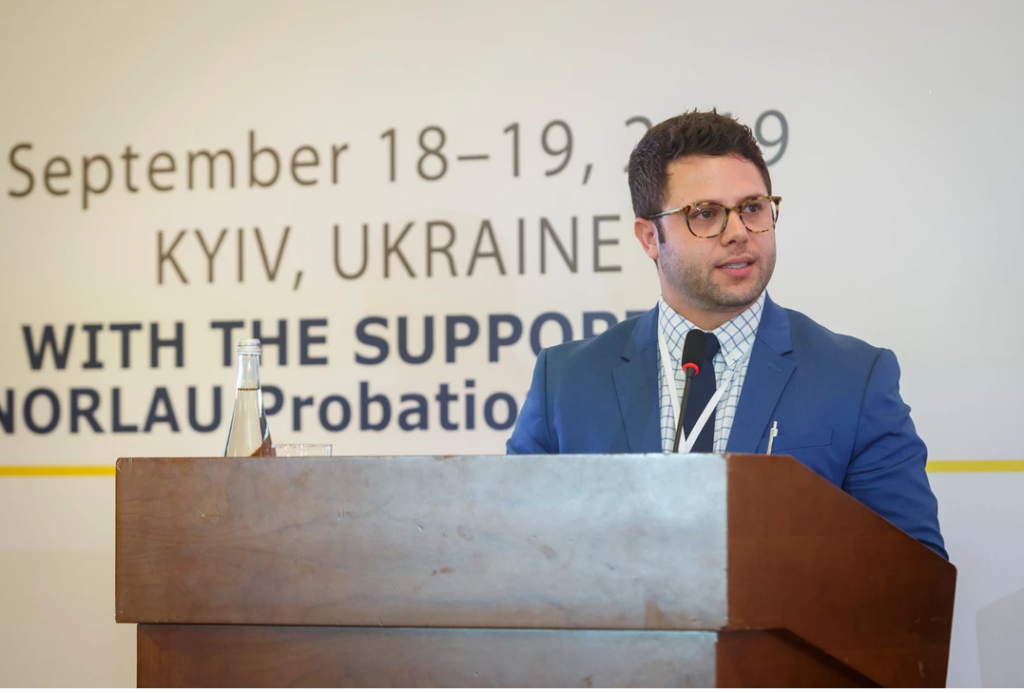CDCR learns valuable lessons from other countries
By Krissi Khokhobashvili, CDCR Office of External Affairs
CDCR has long known the benefits of listening, collaborating, and learning from others. Leadership throughout the Department attend conferences, tour state and local correctional agencies, and host criminal justice professionals from around the globe as they visit California’s prisons and reentry facilities.
But this year CDCR stepped it up a notch, sending leaders on two international trips aimed at sharing best practices and learning more about the common thread of humanity that runs through corrections – whether the system has 100 incarcerated people or 100,000.
While Secretary Ralph Diaz, Division of Adult Institutions Director Connie Gipson, and several governmental leaders, reform advocates and formerly incarcerated people toured Norway’s corrections systems, other CDCR officials were on an educational trip of their own. Associate Warden Rosalinda Rosalez and Division of Rehabilitative Programs (DRP) Deputy Director Ryan Souza were experiencing what criminal justice looks like during a tour of the Ukraine prison system.
“I was really interested in the culture there and how it differed from America,” Souza said. “I was excited to go there and get entrenched in the environment, and see what we could glean from it.”
An information exchange
The learning began in April 2019, when Vadym Chovgan visited CDCR from Ukraine through the US Government Professional Fellows Program. Chovgan spent a month embedded with CDCR, learning about custodial policies and procedures, reentry planning, research practices, and the parole process.
His mission was to see as much as possible, which included up to five meetings per day, and visiting several prisons, jails, and reentry facilities, with a focus on training and rehabilitative programs.

Rosalinda Rosalez, left, and Ryan Souza with staff at the Bila Tserkva Penitentiary Staff Training Center. 
Rosalinda Rosalez, front row third from left, and Ryan Souza, front row second from right, with staff and visitors to the Bila Tserkva Penitentiary Staff Training Center.
“I was lucky, as I was able to learn first-hand information from the US prison system, its employees, and even prisoners,” Chovgan shared. “In general, Europeans learn about the US system based on documents, news, and TV, which distorts the true face of your prison system a lot.”
“I think we are hostages of clichés about our countries and their prison systems,” he added. “Mostly these clichés are formed by the media. Personal experience allows thinking out of box and breaking the clichés.”
During his time at CDCR, Chovgan spent time at DRP, where he met Souza and learned about the many rehabilitative, vocational, educational, and reentry programs offered to people incarcerated in California. As the two began exchanging ideas, Chovgan mentioned that he’d love to bring Souza back to Ukraine to see their system – and the idea was born.
Tour proposed by Ukraine after they visited California prisons
Chovgan wrote the project proposal, which was supported by the US Department of State and administered by the American Councils for International Education through the nonprofit Free Zone, which aims to share best practices and improve conditions for currently and formerly incarcerated people worldwide.
And who better to accompany Souza on the trip than Rosalez, who has over a decade’s experience in corrections and has advised CDCR leadership through several sweeping law and policy reforms?
“Being in this policy area for 15 years, I saw this trip as an opportunity for us to go to Ukraine and present on some of the things California has accomplished,” she said. “Going there, I felt like we ended up learning as much as we shared because Ukraine is a developing country, post-revolution, so they are reinventing themselves in a way similar to what this Department is trying to do.”
Tour highlights differences, similarities between California and Ukraine prison system

During a tour of the Ukraine prison system, Ryan Souza spoke about CDCR’s rehabilitative programs. 
Rosalinda Rosalez and Ryan Souza sat on a panel to share insights about rehabilitation and criminal justice reform in California.
There are stark differences between California and Ukraine, both in terms of architecture (most prisons in Ukraine are hundreds of years old) and population. California has around 125,000 people incarcerated in its state prisons, while Ukraine’s prison population is less than 60,000, with 130 prison “colonies” housing an average of 300 people each.
There is no way to earn credit for time off sentences, and parole is reserved for only the most serious cases – normally, when one’s time is up, they’re free to go with no supervision.
In Kiev, the CDCR visitors were able to visit a correctional training center, where they spoke with new and seasoned staff members and viewed training facilities. At Bila Tserkva correctional colony, the pair quickly realized that despite a distance of nearly 6,000 miles and differences in population and culture, the core concerns of safety and security remain at the forefront of both correctional systems, which are both striving to do better in terms of preparing people for returns home.
While some of the prisons and pretrial detention centers were built by Catherine the Great, they’ve been outfitted with features California’s correctional officers would find familiar – sally ports, offender ID cards, key control, etc.
CDCR offers varied rehabilitation programs, while Ukraine does not
When it comes to rehabilitation, however, there are big differences between the two systems. Where California offers robust programs ranging from education and vocation to Cognitive Behavioral Interventions and introspective courses such as Arts in Corrections, yoga and dog training, Ukraine’s offerings are much more limited.
“They have industry, they have education, and they have employment,” Rosalez said.
“They build fences, trailers and locks,” Souza added. “That is their training. I was a little taken aback, but it really opened my eyes to the fact that not every doorway has the same key. You have to look at the culture outside to know what is important inside.”
The Ukraine prison system is significantly underfunded, relying on the labor of its incarcerated people. In addition to industry inside prison walls, people with minimum-security status are able to leave the colony during the day to work in the community, but approximately half their wages go into the prison budget.
Ukraine leaders strive to reduce recidivism
Like California, Ukraine has had difficulty convincing its citizens and correctional staff of the importance of rehabilitation, but Ukraine is striving toward an increased focus on rehabilitation and reentry. In addition to sentence reforms, the country is also looking at credit-earning structures that would give incentives to participate in rehabilitative programs, as well as looking at expanding alternatives to incarceration.
“They want to start pushing toward rehabilitative practices to impact recidivism and success after release,” Souza said. “But they are looking for places to start that are very low-cost. They are a very poor country, looking for creative alternatives to get rehabilitation on the right path.”
“We have specific ideas of what we mean when we talk about rehabilitation,” Rosalez said. “Cognitive Behavioral Interventions, Computer-Aided Design, coding – these things are not available to Ukrainians as a whole.”
That said, what Souza and Rosalez did see at Bila Tserkva were people working, engaging peacefully with one another, connecting to their families, and other pro-social activities also vital to successful rehabilitation.
Freedom of movement differs in Ukraine system
They also took note of several practices unheard of in California, including more freely allowing movement, and allowing incarcerated people to keep personal property and pets. Only the warden is allowed to take away visiting, and only in extreme cases. Only a court can approve keeping someone in Administrative Segregation for longer than 30 days.
Bathrooms had privacy walls for toilets and showers, and the windows in medium-security cells were made of single-paned glass.
“When asked about what happens if the glass is broken, they said, ‘No, they’d be cold, so they don’t break windows,'” said Souza.
Some of the biggest surprises on the Ukraine prison tour involved security issues. CDCR would have significant security concerns with some of the practices, Souza said, but people in Ukraine’s correctional system committed the same types of crimes as those in California’s.
“They have a fundamental understanding of humanity,” Rosalez said. “We came away asking ourselves ‘Do the rules that we have serve a legitimate penological interest, or are they rules because they’ve been in place for decades?'”
While there were more differences than similarities between the two systems, the CDCR duo came away with an increased understanding of the universal challenges agencies face when cultures shift.
“They’re trying to distance themselves from Soviet influence, and California is trying to distance ourselves from overcrowding and prison as punishment,” Rosalez said. “We really had the opportunity to see what it’s like to start from a blank slate and reinvent yourself – and to bring some of that to CDCR, because we have a lot of the same challenges.”
Learn more about the American Councils for International Education, the organization responsible for administering the Ukraine prison tour.
